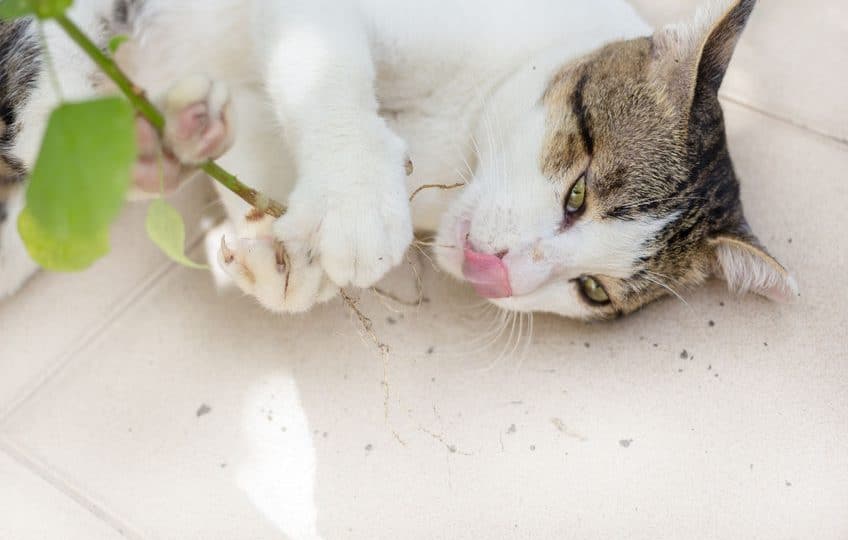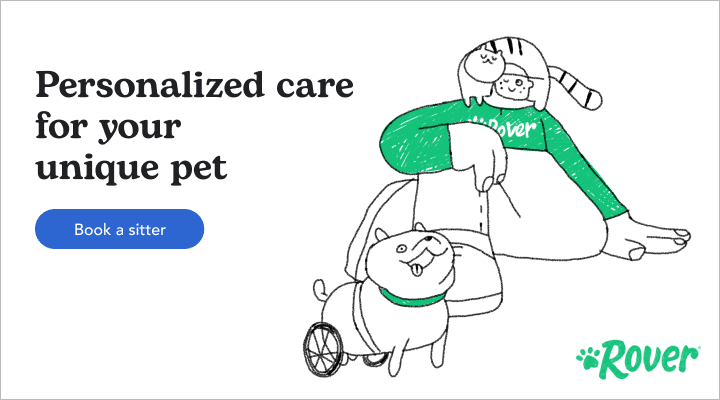- Not a substitute for professional veterinary help.
We often think of chewing as a puppy problem, but it can be just as prevalent in cats of all ages. And it can be more destructive.
Chewing in cats isn’t necessarily a sign that something is wrong, but it can lead to health problems for your cat. If you’ve got a serial chewer on your hands, we’ll explain what might be causing it and provide some tips to help stop your cat from chewing on everything.
Why Do Cats Chew?
There are a lot of reasons why your cat might be chomping away on anything from wires to your favorite sweater. They could be chewing for curiosity, anxiety, or even to soothe achy gums.
While most of these underlying issues do not need medical attention, chewing itself can be quite dangerous to your cat.
Our houses are full of non-cat-friendly objects. Think wires, cleaning supplies, or materials that can obstruct their digestive systems.
Cats shouldn’t be chewing on anything that isn’t their food or a safe toy (more on this in a moment). This means you might have to be creative about keeping his favorite chew targets hidden until you can break him of this habit.
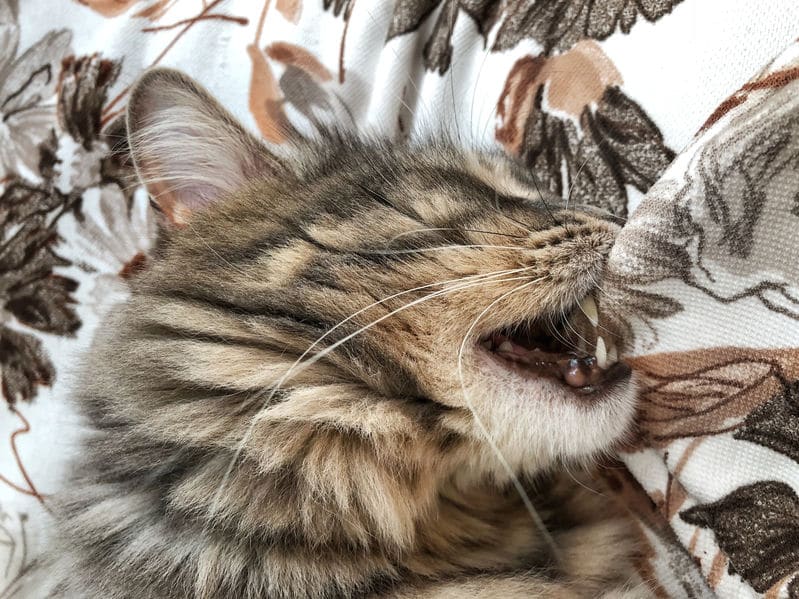
Cat Chewing Fabric – 123RF
The Curious Chewer
Like puppies, some cats just like to taste life. It’s all about exploring and they probably enjoy the tactile experience of chewing, according to PetMD.
But cats have sensitive digestive systems and ingesting foreign objects can result in uncomfortable kitties and high medical bills. (Not to mention the damage to your favorite sweater.)
The Anxious Chewer
Some breeds of cats are just naturally more high-strung, according to PetMD (think Siamese cats). If you have a cat that is prone to anxiety—and this could be triggered by a number of things, like a move, a new pet, not enough mental stimulation—your cat might take out his frustrations on random household objects.
After all, chewing is a cat instinct and could provide them with comfort. Chewing mimics how they handle prey and is a natural behavior.
If you have an anxious chewer, consider giving him a safe toy designed for chewing that helps them to scratch this itch. Once a cat has a target for chewing, they often just settle down and chew away.
The Achy Chewer
Once in awhile, chewing can be a sign of a medical issue, namely, achy gums. And this makes perfect sense. Puppies, babies, even elementary-aged children, all chew to soothe gums when they are teething.
Your cat, however, most likely is not teething, but sore, achy gums are still behind this behavior.
If your cat has red gums, it might be a good idea to have a vet check him out to make sure the dental disease is not the underlying cause for his obsessive chewing.
Likewise, if your cat is drooling and licking in addition to chewing, it could be a sign of gastrointestinal problems. In any case, if you are unsure of what is causing the behavior, check with your vet to make sure your cat doesn’t have one of these health issues.
The Usual (Household) Suspects
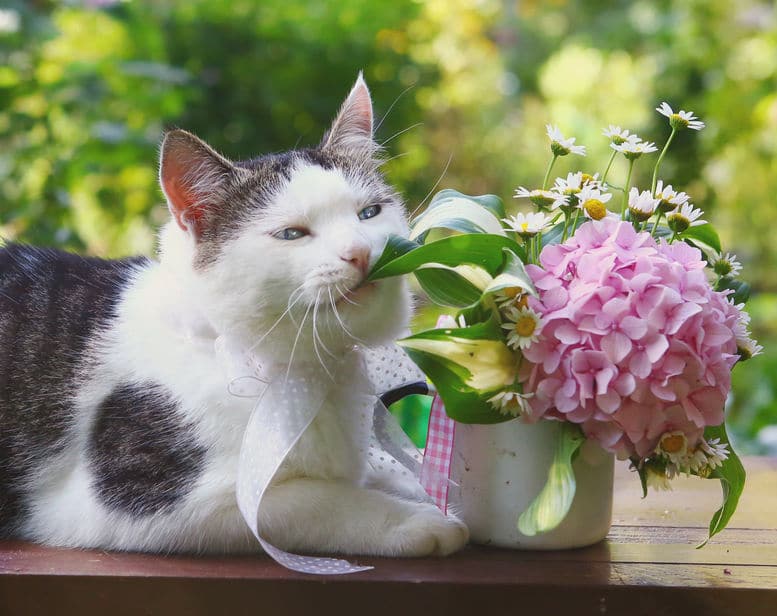
Cat Chewing Plant – 123RF
Cats tend to target a few common household objects, each of which brings their own set of challenges. Some cats gravitate toward soft fabrics that might mimic the feeling of prey in their mouths. Fabrics can be dangerous because cats will swallow pieces, which could obstruct their digestive systems. Similarly, some fabrics might have decorations, such as sequins or small buttons that can be dangerous.
Other cats go after wires. These are among some of the more dangerous targets because they can get shocked or severely burned. If that’s your cat’s go-to object, consider immediate action to hide or cover wires.
Another favorite target is plants. That may seem OK, but many household plants are poisonous to cats. And even if they’re not poisonous, they may upset your cat’s sensitive digestive system.
Some common indoor or outdoor plants that are poisonous to cats include:
- Daffodils
- Lillies
- Tulips
- English Ivy
- Chrysanthemum
- Spanish Thyme
For a more complete list of poisonous plants, check out Rover’s Top 10 Poisonous Plants to Dogs and Cats. We also have a list of safe plants.
How Do I Stop My Cat From Chewing on Everything?
The bad news is, chewing can be instinctual, which means it could be difficult to stop. The good news—cats can be distracted. That is, you can channel that chewing energy onto safe target objects.
The first step is to cat-proof your home. Make sure that dangerous objects (anything from fabrics to wires to plants) are not accessible to your cat. For outdoor plants, consider using wire fences to keep your cat away. For electrical wires, consider moving furniture or rugs to hide them. Sometimes this is enough to dissuade a chewer.
Some cats, however, are a bit more persistent so many need a little more persuasion to find a new hobby. For these cats, you may have to take more direct measures, such as using scents on his target objects that cats find unpleasant, like rosemary, lemon, or cayenne, according to PetMD.
If these efforts are unsuccessful, try providing your cat with a safe chewing environment. If your cat targets fabrics (which might mimic prey to them), give them some safe fabric toys that are both interesting and designed for chewing.
If your cat prefers plants, consider growing cat-friendly grass in your house. This is safe and edible, and many cats (particularly indoor cats) love this opportunity to commune with nature…by chewing it, of course.
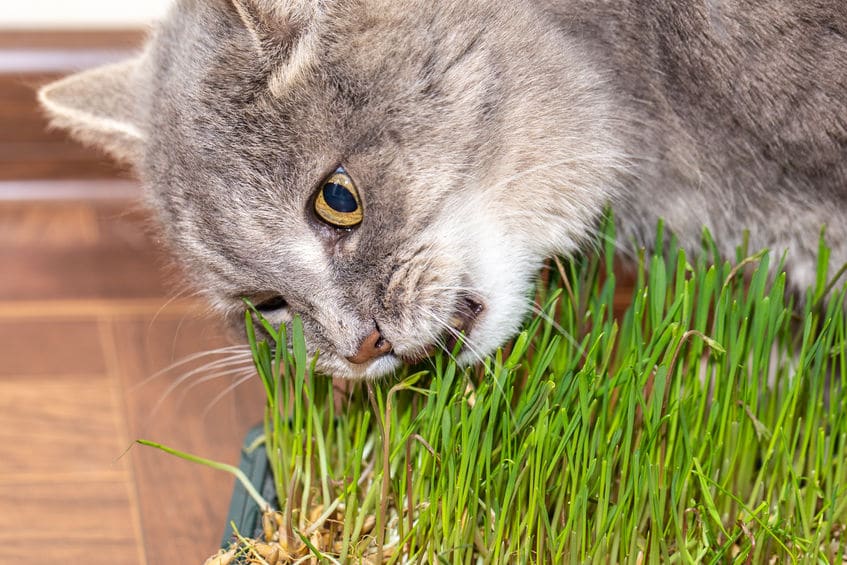
Cat-Safe Grass – 123RF
If none of these tricks seem to be doing the trick, ask your vet. They will be able to identify any underlying issue and help with ideas to keep your cat safe.
